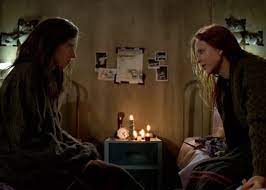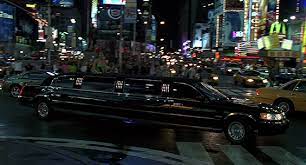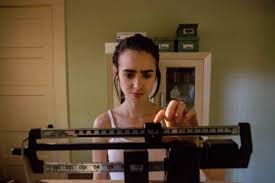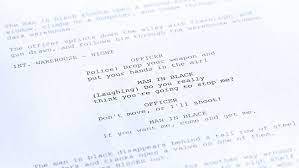Genre Research - Drama
Coming of age films are drama films that typically portray the moral growth of the main character from youth to adulthood, or a more matured state of mind.
C.A.M.S (camera angles, movement, shots)
- close up angles: Coming of age films want to strongly present the range of emotions the character goes through as the develop and mature. Close up angles help to produce this by giving close ups to the character's face emphasizing these portrayed emotions.
- cut away camera movements: Cut aways are camera movements that show the bigger objective shot of the scene then cut to individual important objects in the scene. When emphasizing a character, a big group will be shown as the entirety of the scene picture the it will cut away to the one character, typically our main character to emphasize the contrast and focus of them.
- two shots: Whether closely angled or angled far away, two shots are crucial for coming of age films in scenes where a significant romance, friendship, or conflict. Two person conflicts/relationships will prove significance throughout their interactions in the film.
- canted angles: Canted angles are angles that are slanted this helps to create a sense if distortion, or sometimes inebriation of characters in films. Typically these angles are used when the min character is experience a breakdown such as a panic attack or when they are drunk to help the audience emphasize with their interpersonal distortion.
- high angles: During the adversities a character may experience during a coming of age film, high angles will be used to portray the character as vulnerable to their struggles.
C.L.A.M.P.S (costumes, lighting, acting, makeup, props, setting)
- costumes: Coming of age films are typically centered around teenagers so costuming is typically normal clothing normal teenagers will wear.
- lighting: Warm softer lighting is typically used in coming of age films to preserve the youth of the typically adolescent character. Sometimes hard lighting is used in harsher scenes our protagonist goes through. Party scenes are typically used in coming of age films so strobe lighting or red lighting will be used to depict this.
- makeup: To follow the relatable day to day teenager, makeup is usually kept to a minimum with simple stage makeup to portray a natural face. At times when the protagonist may be crying, extra blush may be used to intensify the portrayal of these emotions.
- props (Mise-En-Scene): Props in coming fo age vary but typically cellphones are used, diaries if the protagonist is using one to manage stress through the coming of age transformation. In more challenging coming of age films, alcohol may be a common prop to help the protagonist cope.
- setting: Small towns are common settings to give a sense of relatability to the protagonist. School is another common setting since coming of age characters are usually high school aged teenagers.






Comments
Post a Comment